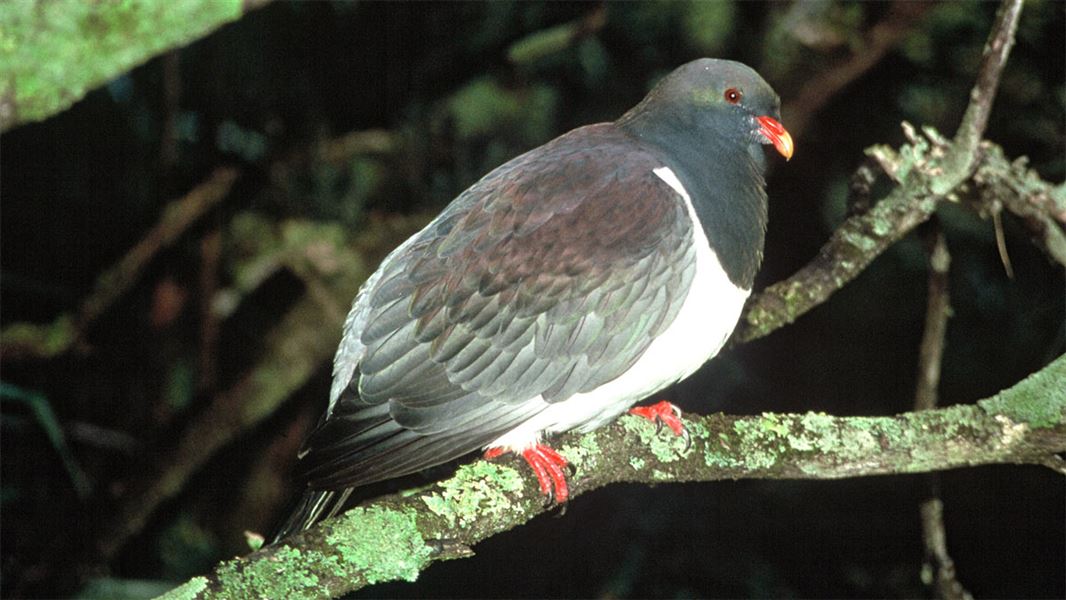New Zealand status: Endemic
Conservation status: Threatened–Nationally Vulnerable
Population: Estimated 600 in 2009
Found in: Forested areas particularly in the south of Chatham Island
Threats: Predation, habitat loss
Sound recording:
Chatham Island pigeon/parea song (MP3, 1,278K)
01:21 – Chatham Island pigeon/parea singing, eating berries, hopping between trees and occasionally flying.
Species information: Chatham Island pigeon
Chatham Island pigeon conservation
Emergency hotline
Call 0800 DOC HOT (0800 362 468) immediately if you see anyone catching, harming or killing native wildlife.
The Chatham Island pigeon or parea (Hemiphaga chathamensis) is one of two species of native pigeon in New Zealand. It is heavier than the New Zealand pigeon, and has a red bill with an orange tip.
Tuku Nature Reserve
Due to the loss of much of Chatham Island's original forest cover, parea are now restricted to the south-west of the island, in the Tuku Nature Reserve and adjacent covenants.
The 1,238 ha Tuku Nature Reserve was donated to the Crown by Manuel and Evelyn Tuanui in 1983. Since its protection the forest has improved, providing more food and habitat for parea.
Predator control
Parea spend much time on the ground grazing on leaves and fruit, making them an easy target for feral cats. Cats, possums and rats can also easily access parea nests which can often be in low vegetation or on the ground.
DOC undertakes cat, rat and possum control within the Tuku Nature Reserve and assists owners of adjacent Conservation Covenants to do the same.
Unfortunately, traps set to protect parea sometimes catch parea. Considerable effort is put into trap placement and understanding parea behavour to avoid this.
Surveys
DOC carries out surveys during the breeding season every five years, to help us understand the population size and trend.
A survey found that the population has increased to around 500 birds, from a population low of 40 in the late 1980s.
Help of landowners
Landowners have helped protect the habitat of the parea by creating reserves and fencing remnant bush to keep out stock. Predator control has also been carried out.
You can help
Sightings of parea outside the south-west Chathams are of interest and should be reported to the Chatham Islands DOC office.
If you are travelling to the Chatham Islands, or transporting goods or livestock there, be careful that you don't introduce pest animals and plants or diseases. These could threaten the flora and fauna in this unique environment.
